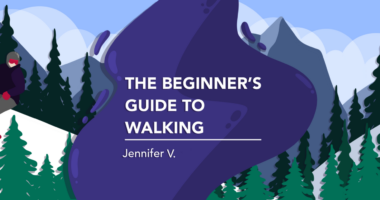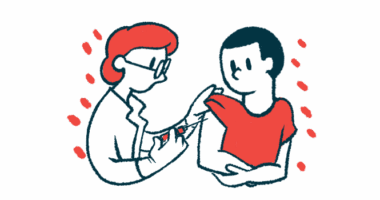Embracing Science for My Own Survival

We cannot separate science from life. Trust me, I’ve tried.
Like most young people, I once thought of myself as invincible. So I was absolutely stunned when I was diagnosed with neuromyelitis optica (NMO) at the age of 24. With the diagnosis, my world came crumbling down. Yet while the paralysis and vision loss were immediate, the realization that everything had changed took some time to process.
That’s when science became my life.
An introduction to the science of healthcare
I’ll admit, I still struggle to properly pronounce the formal names of all my medications, but I now know more about the healthcare system than I ever imagined.
At the start, I was overwhelmed by medical jargon, tests, drugs, and numerous appointments. In the early days of my diagnosis, I cried in the shower almost every day.
Still, I fought hard to behave as I had before my diagnosis. I tried to separate myself from the disease and the science, but that only left me feeling empty. While I looked and sounded like myself, in reality, I had become a shell of my former self.
The healthcare system is inherently that: an intricate system, with paperwork shuffling from one specialist to another. It can feel like that Bill Murray movie “Groundhog Day.”
Becoming a living specimen
My appointments require my attendance for a specialist to review my file, agree with the findings and treatment plan recommended by other specialists, and then send me on my way.
I have felt frustrated by their demands to see me in person when they could have reviewed my file during a phone call, and in some cases, without me. I am fortunate that I can still drive and have the means to get to these appointments, but my energy levels are limited. This is the true cost of attending them. How do other patients who don’t have the means manage with these seemingly endless appointments?
The mystery of MRIs
MRIs are hard to obtain in Canada’s public healthcare system. They are expensive, so specialists are told they shouldn’t request a scan unless they are absolutely necessary. That means if I want an MRI, I must wait for a major attack to happen first, which is a truly reactive approach. If MRIs were more readily available, my doctors might catch the progression of lesions more quickly and alter my treatment plan, possibly allowing me to avoid having a debilitating attack.
Even if I’m fortunate enough to get an MRI appointment, the wait times in major Canadian cities can be up to six months — and this was before the pandemic started. But what they don’t tell you is that you can try to cold call to land yourself in a hospital lab on the same day.
Let me explain: In all of the hospitals here, lab technicians are booked a fixed number of patients for each shift. This allows space for unforeseen appointments, such as emergency patients and walk-ins. They also leave space between bookings in case a machine breaks down or a patient moves too much, requiring a repeated scan. That leaves a lot of time that could easily be filled with my scan appointment. I once cold-called myself into a lab across town and got a spot in the middle of the night.
Tracking my medication
As a patient obtaining prescription medicine, it’s natural to select the nearest major chain pharmacy, as there’s one in every community. But receiving quality service can be challenging, because with so many customers, service becomes impersonal. This means I must be organized, know when my refills are coming up, and call far in advance.
More than once, I’ve requested a refill of my medications and received only a partial amount. This is because pharmacies must keep drugs stocked on their shelves in case other patients need the same medication. When it happens, I must make multiple trips for the same prescription, despite the pharmacy knowing I am coming.
I recommend using smaller mom and pop pharmacies because they invest time in getting to know their customers. They also often offer free delivery.
Online pharmacies, which seem to pop up every month, are another option, although I haven’t tried them yet. They are often affiliated with, partnered with, or owned by tech giants. Like everything on the internet, online pharmacies seem to receive mixed reviews, and it’s tough to know which ones are legitimate.
The future of science
While my life has become a collection of moments affected by NMO, I know I will be OK because of science, scientific developments, and various procedures. In that regard, science has become my way of life. And while I might not be invincible anymore, I am the next best thing because of science.
Note: Neuromyelitis News is strictly a news and information website about the disease. It does not provide medical advice, diagnosis, or treatment. This content is not intended to be a substitute for professional medical advice, diagnosis, or treatment. Always seek the advice of your physician or other qualified health providers with any questions you may have regarding a medical condition. Never disregard professional medical advice or delay in seeking it because of something you have read on this website. The opinions expressed in this column are not those of Neuromyelitis News or its parent company, Bionews, and are intended to spark discussion about issues pertaining to neuromyelitis optica spectrum disorder (NMOSD).







Leave a comment
Fill in the required fields to post. Your email address will not be published.